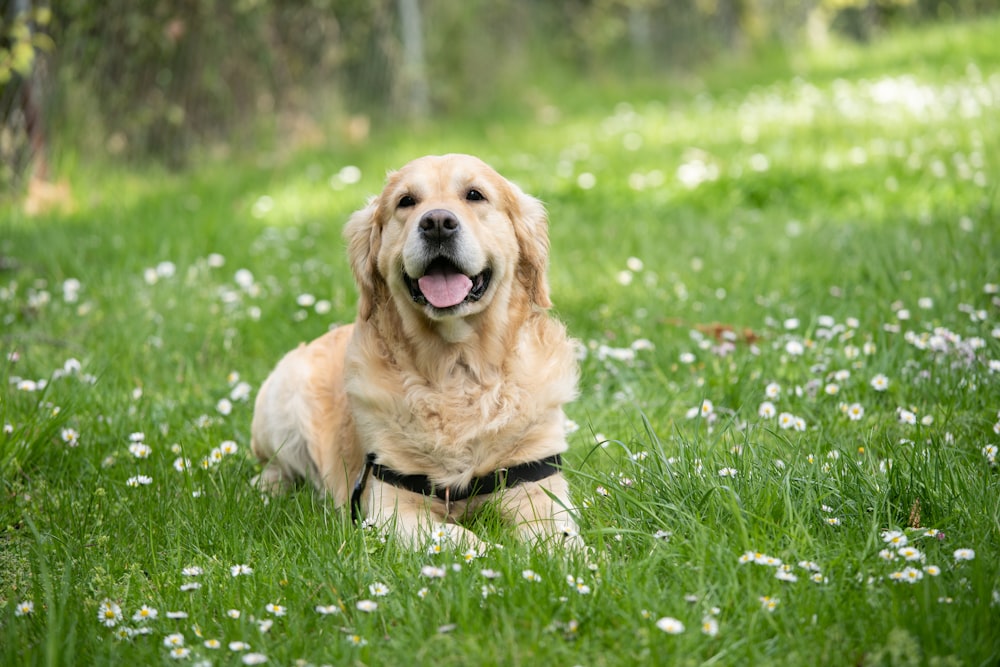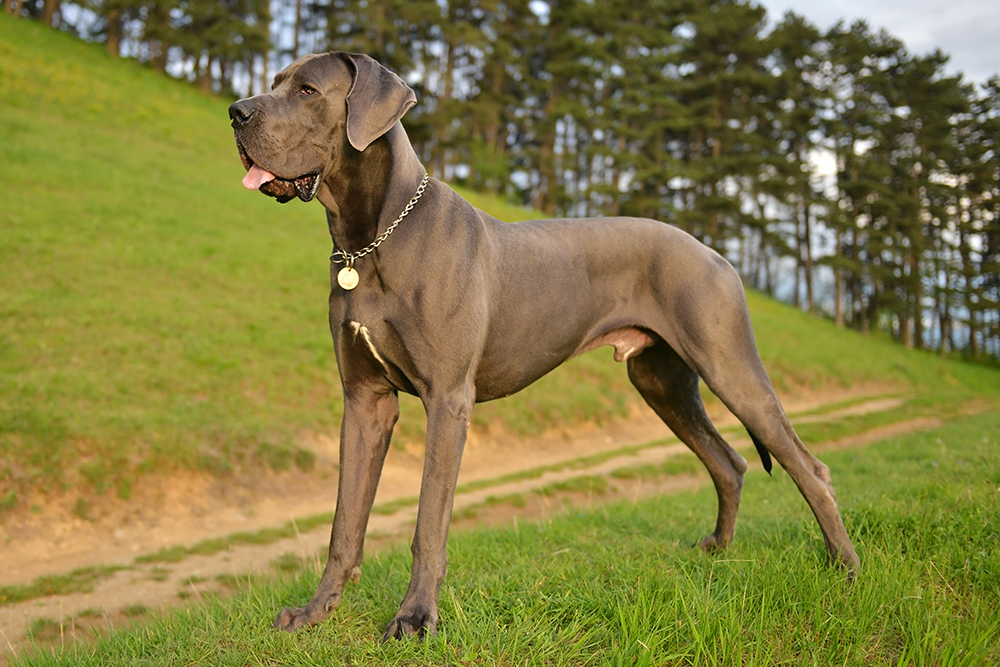“Seven dog years for every human year” may be easy to follow, but owners are often surprised to learn this outdated rule is only practical for a short period in a dog’s adult life. Many dogs enter their senior years when they turn eight, with approximate ages ranging from 48 dog years for small breeds to 64 dog years for giant breeds.
Eight years is a transitional age requiring close consideration by owners who hope to extend their dog’s golden years and provide the highest quality of life. Age can also mean different things depending on the breed, as dogs of varying sizes age at unique rates. Age-appropriate care is critical, as we’ll discuss in this look at how old eight is in dog years.


How Many Years Has the 8-Year Old Dog in Human Years by Size
| Size | Age in human years |
| Small breed (<20 lbs or less): | 48 years |
| Medium breed (21 to 50 lbs): | 51 years |
| Large breed (51 to 100 lbs): | 55 years |
| Giant breed (100+ lbs): | 64 years |
How To Calculate Dog Years to Human Years
Calculating one human year as equal to seven dog years may give you an accurate estimation of a dog’s life stage when they’re adults. Yet, it’s far from practical for a dog’s entire life, especially when they’re puppies.
A more appropriate summation isn’t as straightforward. In the first year, dogs age roughly 15 years in dog years. The second year is equal to nine. From then on, each human year counts for around five dog years.
Small Breeds


While larger species generally live longer than smaller species, intra-species members tend to go the opposite way. Smaller dog breeds usually live longer than larger breeds, with average lifespans of roughly 10–15 years. Many well-bred and cared-for pets can live well into their twenties.
Accordingly, the general age for dogs under 20 pounds at 8 years equals around 48 in dog years. Small breeds develop and reach maturity quickly yet live longer.
Interestingly, they may also be more susceptible to many health issues, including vision, cardiac, liver, and respiratory conditions. Others die from “old age” and conditions surrounding neurological, urogenital, and hormonal health problems.
Medium Breeds


Medium-sized breeds at 8 years are slightly older in dog years, with an estimated age of 51 years. In many instances, though, these breeds still have as much a chance of living as long (if not longer) than smaller breeds.
Bluey, an Australian Cattle Dog, holds the current record for the world’s longest-living dog. Other medium-sized dogs, including a Welsh Sheepdog-Border Collie mix and a Labrador Retriever, also sit among the top dogs for longevity.
As a baseline size for dogs in general, medium-sized breeds may live longer as they haven’t had the same extreme breeding influence to make them super-small or extra-large, potentially helping them stay healthier.
Large & Giant Breeds


Large and giant breeds over 50 pounds age the fastest, with some breeds only having expected life spans of 6–8 years. At 8 years, their approximate human age would be 55–64 years. Although they take longer to reach maturity and their full size due to their larger bodies, they tend to live much shorter lives because they age faster.
Larger dogs are more likely to develop early orthopedic problems like osteoarthritis, gastrointestinal issues, and cancer, the most common cause of canine mortality. The larger size and increases in growth hormones leave them more susceptible to oxidative stress that can lead to faster deterioration and issues like heart disease or cancer.
Behavior changes from physical issues indicating aging will likely appear by the time many large dogs reach their eighth birthday. The onset of issues occurs a few years earlier than for smaller dogs, but the rate of decline is often slower.
Cognitive deterioration may not appear earlier for large breeds than for small ones. As a result, larger breeds may have a lower risk of canine cognitive dysfunction (CCD) syndrome than smaller dogs due to their shorter lifespans.


What’s the Science Behind Dog vs. Human Years?
The conventional “seven dog years for every human year” may be an accurate way to guess a dog’s lifespan, but dogs age at different rates than humans, particularly in their early years.
Anyone who has raised a puppy knows the challenging adolescent stage typically occurs around 6–12 months. It lasts until the dog is roughly 1½–2 years old, though some breeds take longer to mature.
For humans, adolescence occurs between 10 and 19 years, a crucial developmental point as children mature into adults and face the rush of hormonal and behavioral changes that come with it.
Drawing that parallel, we can see why it’s practical to call the dog’s first year equal to 15 human years since dogs reach adolescence shortly before they reach the 12-month mark. With the following year equal to roughly 9 dog years, dogs enter their third year as adults in 24 dog years, a fitting age for their mental and physical developmental stage.
New research is further complicating the appropriate age calculation. A 2019 study on Labrador Retrievers using DNA methylation to assess aging found a nonlinear relationship between dogs and humans, providing a more convoluted calculation as follows:
- Human age equivalent = 16ln(dog’s age) + 311
The limited study may not apply to all breeds, especially as the vast size range gives us diverse age limits between dogs of different sizes. For now, the current “five years for every human year over the age of two” calculation is generally appropriate to follow.




The Life Stages of a Dog
Dogs go through several life stages on their way toward their eighth birthday and their senior years. Although the ages at which different breeds reach them will vary, the following are five stages a long-lived dog will enter:
- Puppy (0–6 months): Socialization, training, and appropriate diet and exercise are crucial as your dog discovers the world
- Adolescence (6–12+ months): Dogs continue growing but become more behaviorally challenging as they test their attachments and develop their independence
- Young adult (2–4 years): Mature dogs are fully developed, settled in their way, and highly active
- Middle age (4–8 years): Depending on the dog’s breed, middle age will last from 4–7 years to 7–10 years, a period when their activity levels will still be high, but you may notice age-related health issues appearing
- Senior (8+ years): Signs of aging, such as graying hair, reduced sensory function, canine cognitive dysfunction (CCD), and accumulating health issues, become pronounced after 6–8 years, with dogs slowing down and becoming less active
Life Span by Breed Size
| Size | Average life span |
| Small breed (<20 lbs or less): | 10–15 years |
| Medium breed (21 to 50 lbs): | 10–13 years |
| Large breed (51 to 100 lbs): | 8–12 years |
| Giant breed (100+ lbs): | 8–10 years |


Key Factors That Affect the Dog’s Aging Process


A dog’s size, genetics, and head shape are the essential physical factors that affect their relative age. As owners, we also have some control over lifestyle variables that can speed or slow a dog’s aging.
The following are some of the primary factors affecting a dog’s aging process:
- Body condition score: Over or underweight dogs are more susceptible to health issues and early death
- Dental cleaning: Dogs with cleaner teeth tend to live longer
- Vet visits: Annual blood work can identify problems early, increasing the chance of a successful recovery
- Diet: Higher-quality diets reduce oxidative stress, improve muscle development
- Breed and life stage-specific foods: Growth and maintenance diets at appropriate life stages ensure proper development and help with longevity
- Exercise and enrichment: Ample exercise and indoor mental enrichment with toys, puzzles, and chews extend life spans while improving quality of life


Conclusion
Dogs live more than we realize in eight short years. For many breeds, particularly the more sizeable varieties, it highlights a critical transition toward their final life stage. Owners often display a higher level of care and a deeper appreciation for their pets as they’re on the way down the hill and show obvious aging signs. Vet visits, daily bonding, and regular training will be more valuable, and you’ll ensure your dog gets the absolute most from their golden years.
Featured Image Credit: Tymoshenko Olga, Shutterstock






